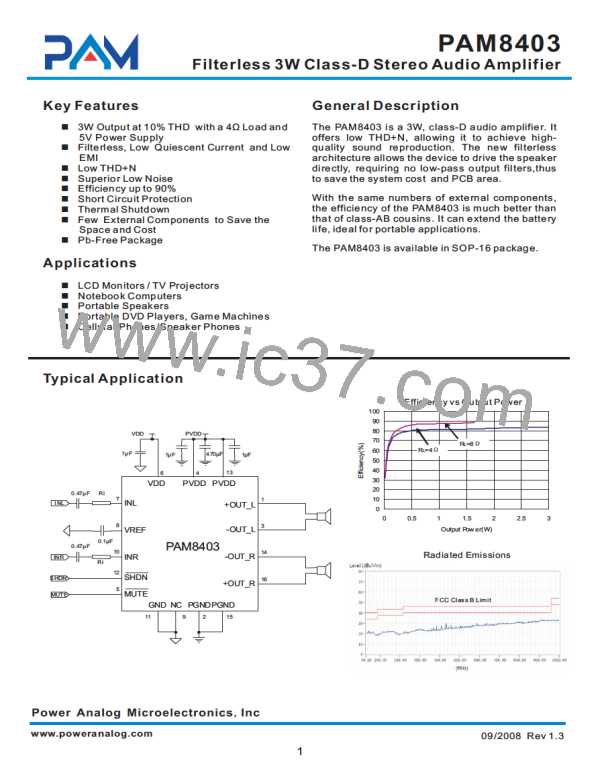PAM8403
Filterless 3W Class-D Stereo Audio Amplifier
probably damage the device. Therefore, it's
recommended to use either 4 Ni-MH (Nickel
Metal Hydride) rechargeable batteries or 3 dry or
Application Notes
1. When the PAM8403 works with LC filters, it
should be connected with the speaker before it's
powered on, otherwise it will be damaged easily.
alkaline batteries.
4. One should not make the input signal too
large. Large signal can cause the clipping of
output signal when increasing the volume. This
will damage the device because of big gain of the
PAM8403.
2. When the PAM8403 works without LC filters,
it's better to add a ferrite chip bead at the
outgoing line of speaker for suppressing the
possible electromagnetic interference.
5. When testing the PAM8403 without LC filters
by using resistor instead of speaker as the output
load, the test results, e.g. THD or efficiency, will
be worse than those of using speaker as load.
3. The recommended operating voltage is
5.5V. When the PAM8403 is powered with 4
battery cells, it should be noted that the voltage
of 4 new dry or alkaline batteries is over 6.0V,
higher than its operation voltage, which will
Test Setup for Performance Testing
PAM8403 Demo Board
Load
AP
+OUT
Input
Low Pass
AP System One
Analyzer
AP System One
Generator
Filter
-OUT
GND
AUX-0025
VDD
Power Supply
Notes
1. The AP AUX-0025 low pass filter is necessary for class-D amplifier measurement with AP analyzer.
2. Two 22µH inductors are used in series with load resistor to emulate the small speaker for efficiency
measurement.
Power Analog Microelectronics,Inc
www.poweranalog.com
09/2008 Rev 1.3
8

 PAM [ POWER ANALOG MICOELECTRONICS ]
PAM [ POWER ANALOG MICOELECTRONICS ]